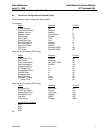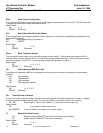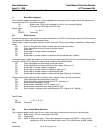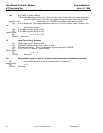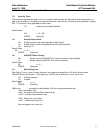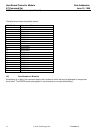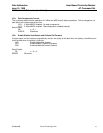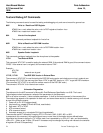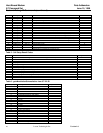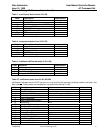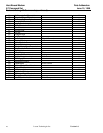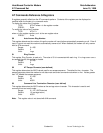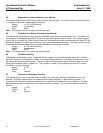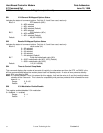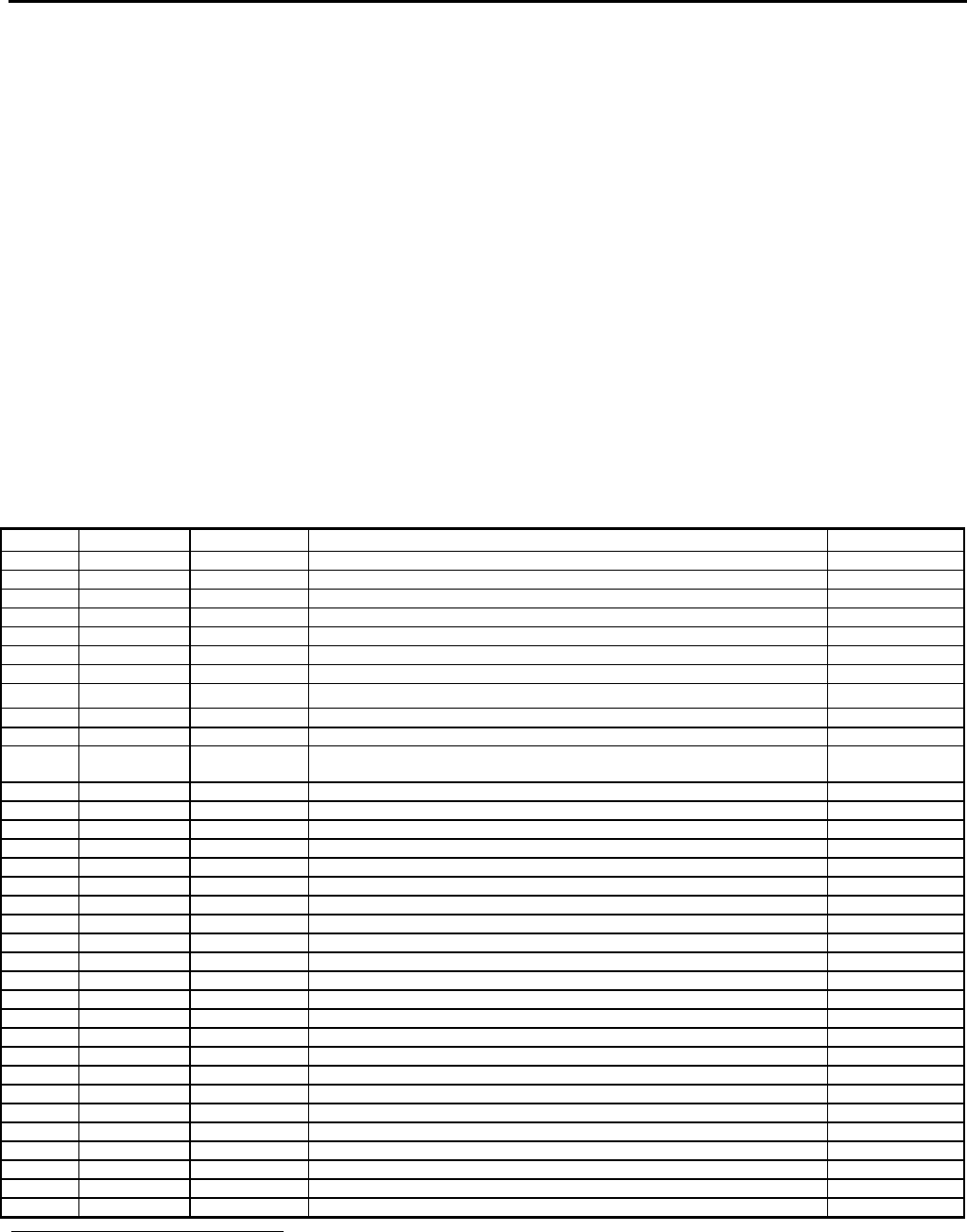
Data Addendum Host-Based Controller Modem
June 15, 1998 AT Command Set
Test and Debug AT Commands (continued)
Version 1.0 Lucent Technologies Inc.
25
The modem may generate a single line or multiple lines, based on modem capabilities and call results, followed
by a standard OK final result code. For example, if call setup failed, only that result is useful. Each information
text line shall be formatted as follows, including one or more key=value pairs:
DIAG <token key=value [[key=value] [key=value]] …>
DIAG 5 characters, hex: 44, 49, 41, 47, 20
< left angle bracket (less than sign), hex: 3C
token unique 32-bit hexadecimal string 2A4D3263, hex: 32, 41, 34, 44, 33, 32, 36, 33
space space character, hex 20
key single hexadecimal numeric digit, see Table 1
= equal sign, hex: 3D
value any string as defined below (Tables 1-3, etc.)
> right angle bracket (greater than sign), hex: 3E
Unless otherwise noted, all values are hexadecimal numbers. Any numeric values from tables in ITU V.58 are
converted to hexadecimal. Multi-digit values are reported MSD first. Leading 0’s may be deleted.
The following table
1
includes all the items listed in Microsoft’s specification for the AT#UD command. Within these
items, the one that has a check mark in the “Implemented” column is implemented in this release of the modem
product. For an item that has an extra option table, please check the corresponding option table to see exactly
which option has been implemented.
Table 1 - AT#UD Last Call Status Report Format
Key value(s) required Definition Implemented
0 2 digits yes Diagnostic Command Specification revision number, digit.digit X
1 Table 2 0-A Call Setup Result code X
2 Table 3 0-1 Multi-media mode
3 Table 4 0 DTE-DCE interface mode
4 String yes V.8 CM octet string, same format as V.25ter Annex A, in quotes
5 String yes V.8 JM octet string, same format as V.25ter Annex A, in quotes
6-F Reserved for call negotiation reports
10 2 digits
Note 4
2 Received signal power level, in –dBm (0-43) X
11 2 digits Note 4 Transmit signal power level, in –dBm (0-17) X
12 2 digits Note 4 Estimated noise level, in –dBm (10-90) X
13 2 digits Note 4 Normalized Mean Squared error, 100 (0x64) = minimum inter-symbol
distance
14 2 digits Note 4 Near echo loss, in units of dB X
15 2 digits Note 4 Far echo loss, in units of dB X
16 4 digits Note 4 Far echo delay, in units of ms
17 2 digits Note 4 Round Trip delay, in units of ms X
18 Table 5 Note 4 V.34 INFO bit map
19-1F Reserved for modulation setup and training reports (Note 5)
20 Table 6 Note 6 Transmit Carrier Negotiation Result X
21 Table 6 Note 6 Receive Carrier Negotiation Result X
22 4 digits 0-1F40 Transmit Carrier symbol rate (0-8000) X
23 4 digits 0-1F40 Receive Carrier symbol rate (0-8000) X
24 4 digits 0-FA0 Transmit Carrier frequency (0-4000)
25 4 digits 0-FA0 Receive Carrier frequency (0-4000)
26 4 digits 0-FA00 Initial transmit carrier data rate (0-64000) X
27 4 digits 0-FA00 Initial receive carrier data rate (0-64000) X
28-2F Reserved
30 2 digits 0-FF Temporary carrier loss event count
31 2 digits 0-FF Carrier Rate re-negotiation event count
32 2 digits 0-FF Carrier Retrains requested X
33 2 digits 0-FF Carrier Retrain requests granted X
34 4 digits 0-FA00 Final transmit carrier rate X
35 4 digits 0-FA00 Final receive carrier rate X
36-3F Reserved
40 Table 7 0-2 Protocol Negotiation Result (Note 7) X
1
Tables are numbered separately within this #UD section to be consistent with the Microsoft specification.
2
Notes refer to notes in the Microsoft specification



